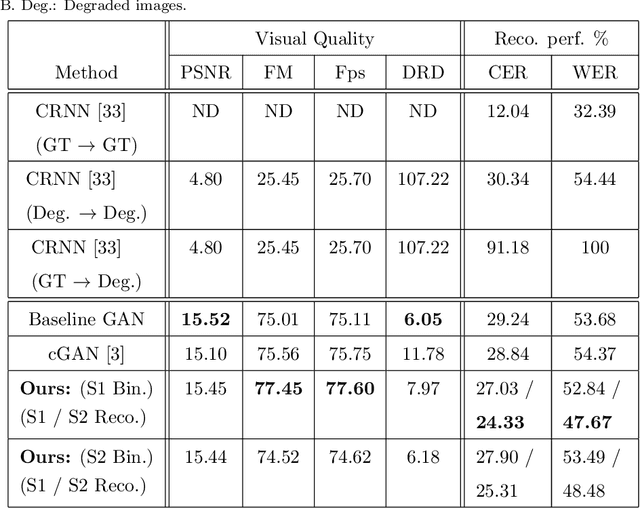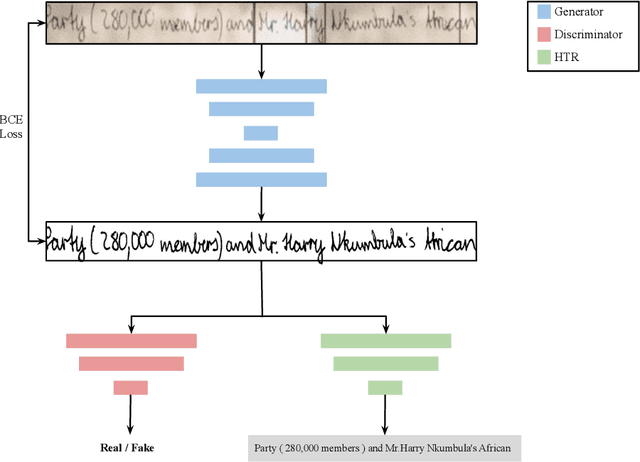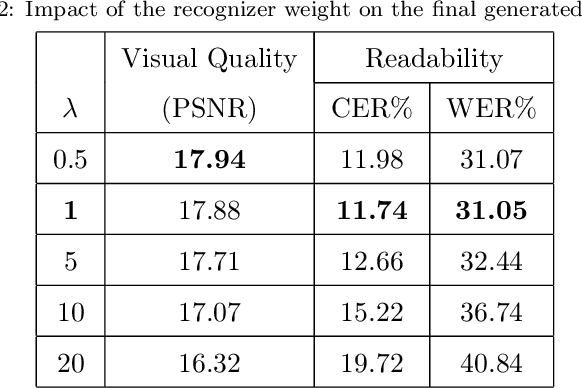Enhance to Read Better: An Improved Generative Adversarial Network for Handwritten Document Image Enhancement
Paper and Code
May 26, 2021



Handwritten document images can be highly affected by degradation for different reasons: Paper ageing, daily-life scenarios (wrinkles, dust, etc.), bad scanning process and so on. These artifacts raise many readability issues for current Handwritten Text Recognition (HTR) algorithms and severely devalue their efficiency. In this paper, we propose an end to end architecture based on Generative Adversarial Networks (GANs) to recover the degraded documents into a clean and readable form. Unlike the most well-known document binarization methods, which try to improve the visual quality of the degraded document, the proposed architecture integrates a handwritten text recognizer that promotes the generated document image to be more readable. To the best of our knowledge, this is the first work to use the text information while binarizing handwritten documents. Extensive experiments conducted on degraded Arabic and Latin handwritten documents demonstrate the usefulness of integrating the recognizer within the GAN architecture, which improves both the visual quality and the readability of the degraded document images. Moreover, we outperform the state of the art in H-DIBCO 2018 challenge, after fine tuning our pre-trained model with synthetically degraded Latin handwritten images, on this task.
 Add to Chrome
Add to Chrome Add to Firefox
Add to Firefox Add to Edge
Add to Edge